In the quest to understand family heritage and how it impacts our lives, the genogram emerges as a crucial tool. Often referred to as an advanced family tree, this visual resource helps identify and analyze family behavior patterns across generations. However, its effectiveness lies in its ability to depict relationships and events using standardized symbols clearly. In this article, we will discover the basic symbols in a genogram and how we can interpret them.
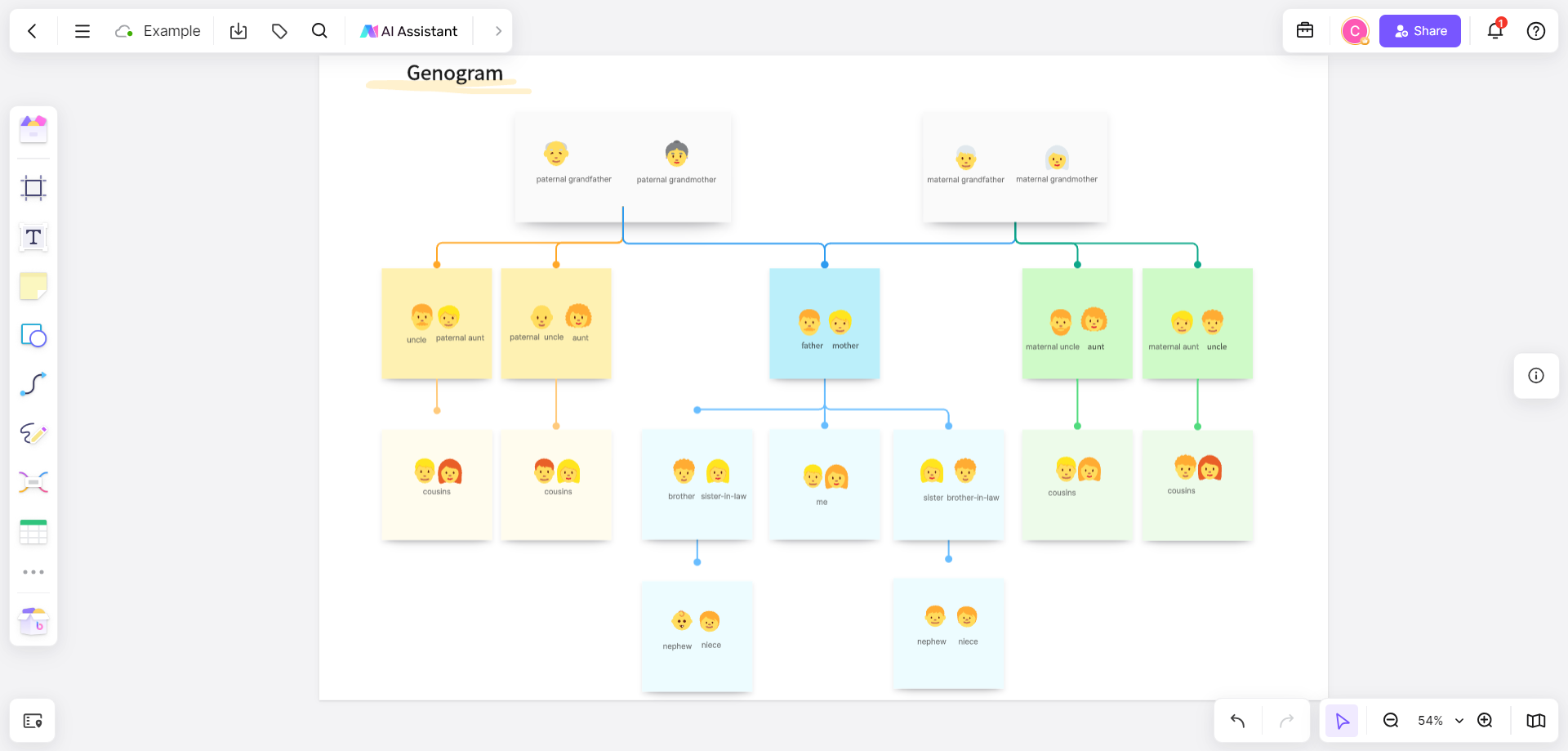
What are Genogram Symbols?
A family genogram, or family map, displays a genealogy that records information about family members and their relationships. It is often used by medical and social professionals to identify hereditary patterns or tendencies.
Genogram symbols are graphical representations used in the field of psychology and family therapy to illustrate family relationships and behavioral patterns. These symbols can represent individuals, their relationships, and also a variety of emotional states and life situations. For example, circles often represent women, while squares represent men. This system of symbology allows professionals to quickly visualize the family structure and dynamics present, which can be helpful in diagnosis and treatment.
Basic Family Genogram Symbols Introduction
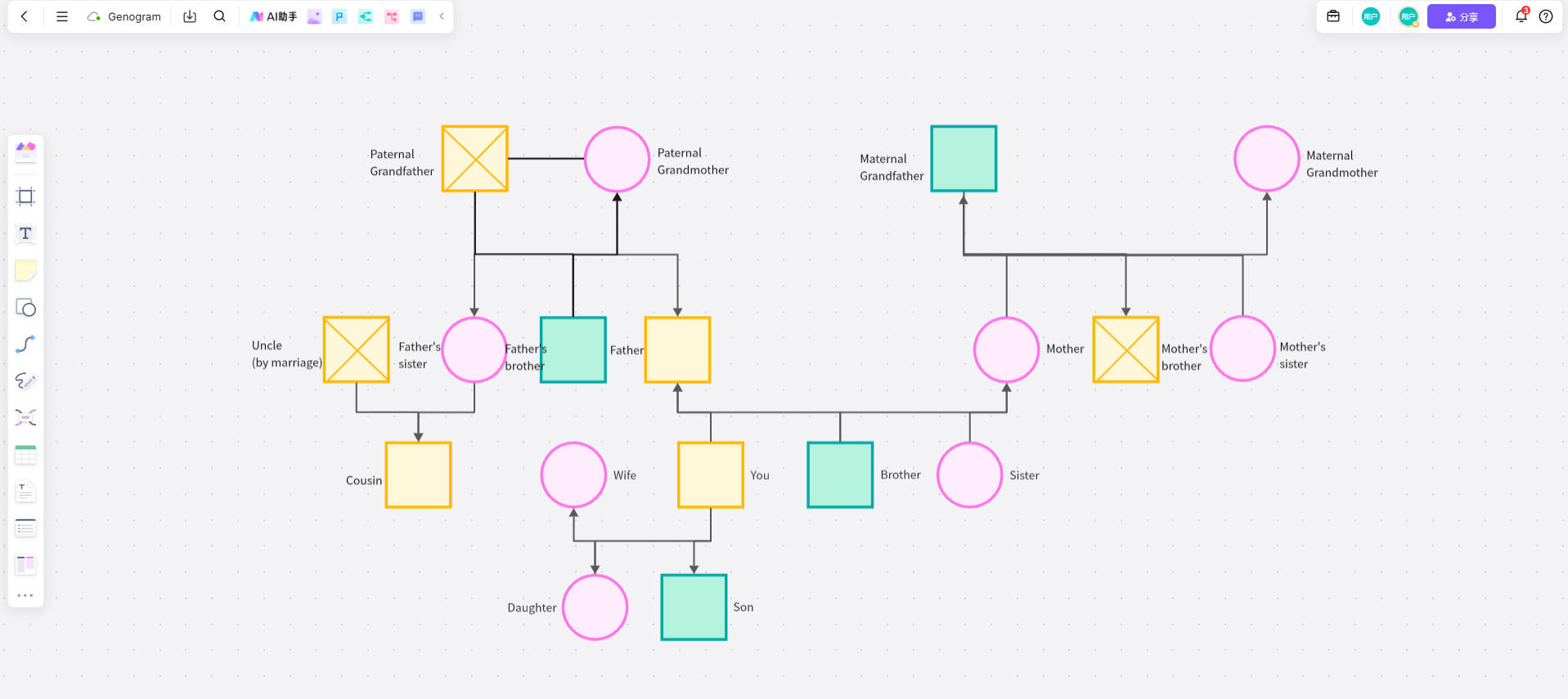
Create a family genogram on Boardmix
Among the basic symbols that comprise a genogram are aspects of gender, relationships, children, pregnancies, medical situations, etc.
1.Gender
In the genogram, gender symbols play a crucial role in representing family relationships and the identity of each individual. Circles often represent women, while squares represent men. However, in the contemporary era, we are seeing an evolution in the way these symbols are used to encompass a broader range of gender identities.
Triangles, for example, are increasingly being used to represent those who identify as non-binary or gender fluid. It is also common to see combinations of shapes, such as a circle within a square, to represent transgender people.
2. Relationships
A variety of symbols are used to represent family relationships and dynamics in the genogram. These symbols are essential to understanding the complexity and depth of family interactions.
Marriage Line: This is a straight line that connects two individuals who are married or in a committed relationship.
Divorce Line: This is a straight line with two bars at the end indicating that the individuals have divorced.
Cohabitation Line: This is a dotted straight line that connects two individuals who live together but are not married.
Engagement Line: This is a straight line with a small diamond in the middle indicating that the individuals are engaged.
Kinship Line: This is a vertical line that connects parents to their children.
Death Line: This is a horizontal line through the individual's symbol, indicating their death.
Conflict Line: This is a zigzag line between two individuals, indicating conflict or tension in the relationship.
Abuse or violence line: This is a line with a lightning bolt, indicating abuse or violence in the relationship.
Time separation line: This is a parallel line with a space in the middle, indicating a temporary separation in the relationship.
Adoption line: This is a dotted line that connects the adoptive parents to their adopted child.
3. Children
In a genogram, children are represented by lines that extend downward from the couple. Older children are placed on the left, while younger children are on the right.
Natural child: This is represented by a straight vertical line that runs from the couple to the child.
Adopted child: This is represented by a line that runs from the couple to the child, but this line is dotted or has a break in the middle to indicate that the child is adopted.
Twins: If they are identical twins, two parallel vertical lines are drawn from the couple to the children, and then these two lines are connected with a horizontal line. If they are fraternal (non-identical) twins, the same symbol is used, but the horizontal line is broken in the middle.
Fraternal twins: These are represented in the same way as fraternal twins, as fraternal twins are technically a type of fraternal twin.
4. Pregnancies
Pregnancies, especially those that end in miscarriage or early infant death, can also be represented in a genogram.
Pregnancy: May be represented by a triangle, sometimes shaded or coloredto indicate the sex of the baby if known.
Miscarriage: Often represented by a triangle with a line through it, or a triangle shaded in the middle to indicate that the pregnancy did not go to term.
Induced abortion: This may be represented by a triangle with two lines through it, or a note next to the symbol to indicate that it was an induced abortion.
Stillbirth: This may be represented by the standard symbol for a child (square for a boy, circle for a girl) with a line through it or a diagonal line through it.
5. Medical situations
In medical situations, family genogram symbols can be as varied as the details we need to capture. Specific symbols may represent particular medical conditions or risk factors. For example, a diagonal line through a symbol may indicate that that person has passed away, while certain patterns or colors within a symbol may indicate genetic or chronic diseases.
Effective use of these symbols in a genogram can help medical professionals identify patterns and trends within a family, which is crucial for diagnosis and treatment. However, it is important to remember that each genogram is unique and must be tailored to the specific needs of the patient or family in question.
How to Create a Genogram?
By understanding the basic genogram symbols, you can now try creating a genogram to get a more detailed and complete view of your family tree and the factors that have affected your history. With the help of tools like Boardmix, this becomes even easier and faster. Boardmix is a powerful diagramming tool with a diverse set of editable shapes and templates that make creating genograms easier and more efficient. Here is a step-by-step guide on how to create a genogram in Boardmix.
1.Getting Started with Boardmix
To get started, you will need to have a Boardmix account. If you don't have one yet, you can create one by visiting the official Boardmix website and following the instructions. Once you've set up your account, you can access a variety of templates and shapes that will make your task easier.

2. Creating with the Genogram Template
One of the great things about using Boardmix is its library of pre-designed templates. There's a template for almost everything, and genograms are no exception. Here's how to use it:
Selecting the template: Log in to your Boardmix account and head to the "Templates" section. Find the genogram template and click "Use" to open.
Editing the template: Once you have the template open, you can start customizing it to your needs. You can add or remove shapes, change the colors, modify the labels, etc.
Saving your work: Make sure to regularly save your work to avoid losing any changes you've made. Boardmix has an autosave feature, but you can also download it in multiple formats such as PDF or PNG.
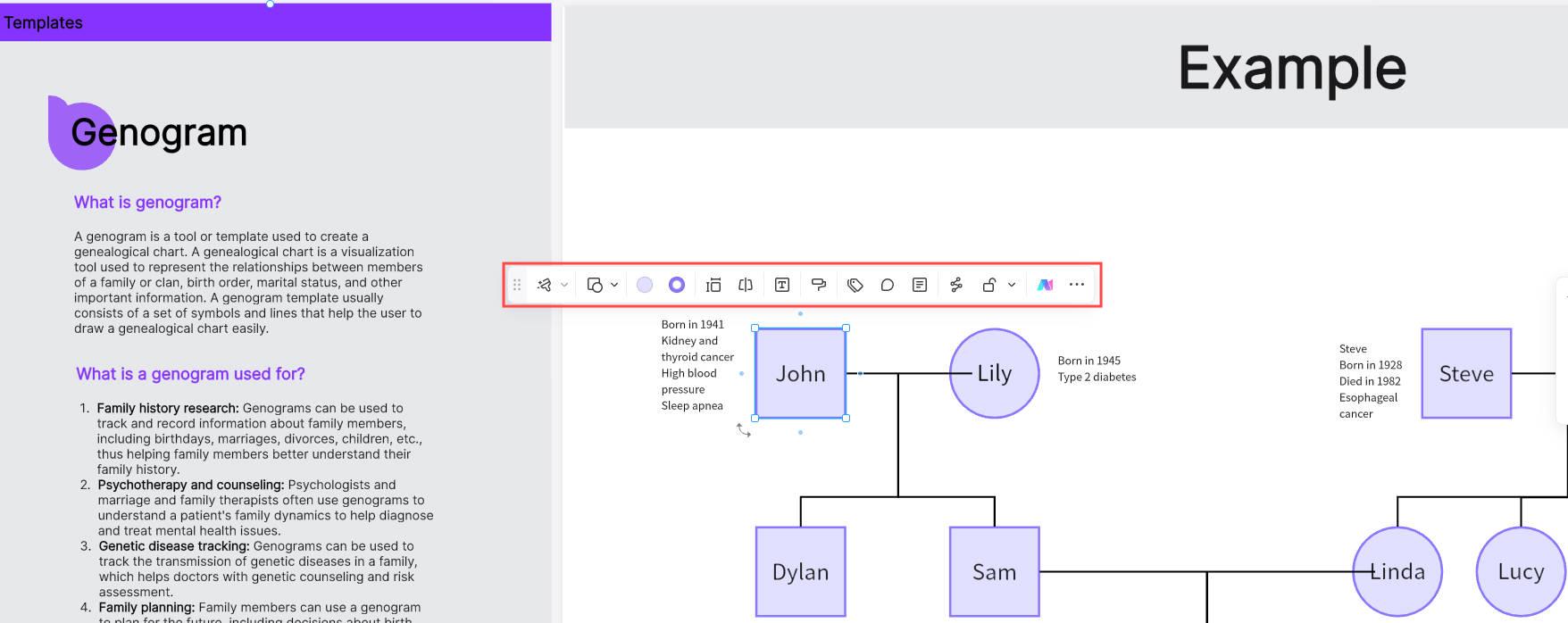
3. Create Genograms with Various Shapes
In addition to templates, Boardmix also has a wide range of shapes that you can use to further customize your genogram. Here's how:
Select the shape: Create a new board and you'll see a series of icons on the left sidebar of the interface. One of them corresponds to shapes. Click on it and you'll see all the available shapes.
Add the shape to the canvas: Once you find the shape you want to use, simply click on it and drag it onto the canvas.
Customize the shape: After you place the shape on the canvas, you can customize it. You can change its size, color, position, and much more.
Repeat the process: Repeat this process with all the shapes you need for your genogram.
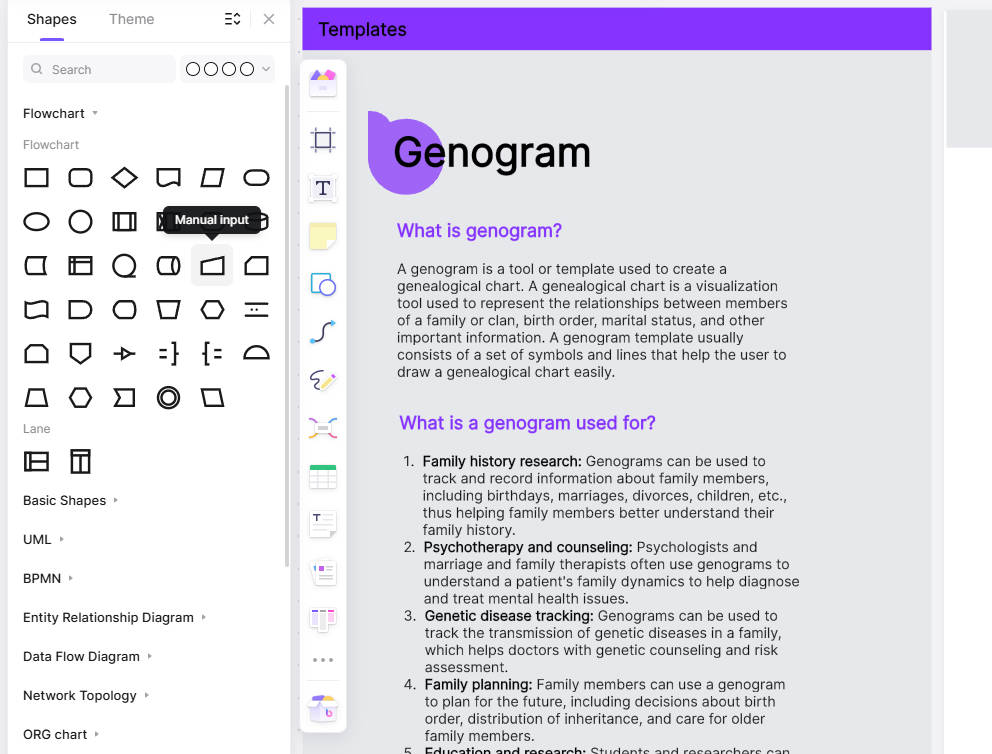
When you've finished your genogram, you can save the file and share it with whoever you want. Additionally, Boardmix allows you to collaborate in real time, which can be helpful if you are working on the genogram with other family members.
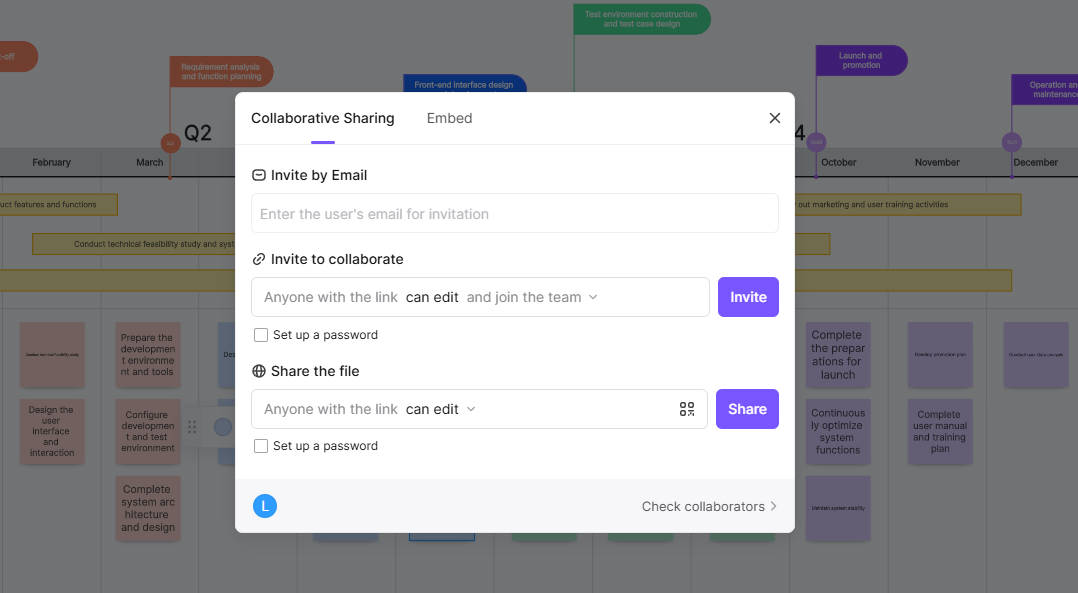
Conclusion
The genogram is an important tool for understanding family patterns and individual life stories. Each of these symbols plays a role in the unfolding of the genogram, and together they provide deep and nuanced insight into family dynamics. Discovering these basic symbols in the genogram can open up new avenues for understanding our own place within the family fabric and how our individual stories intertwine with those of our families.
Boardmix provides you with all the tools you need to create a detailed and accurate genogram. The variety of shapes available and the customization option make Boardmix an exceptionally flexible tool for this purpose. So why not start your genealogical journey today with Boardmix?









